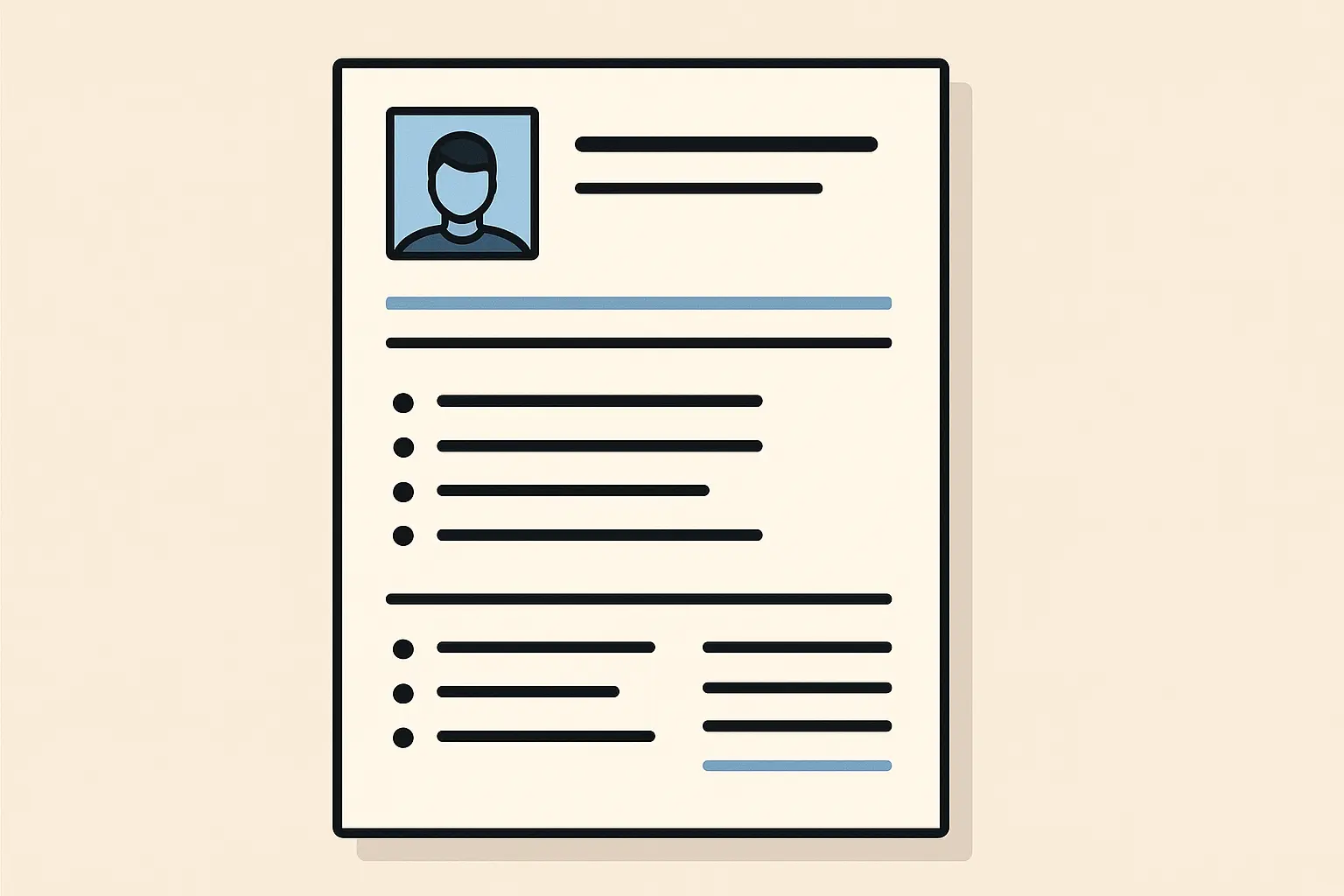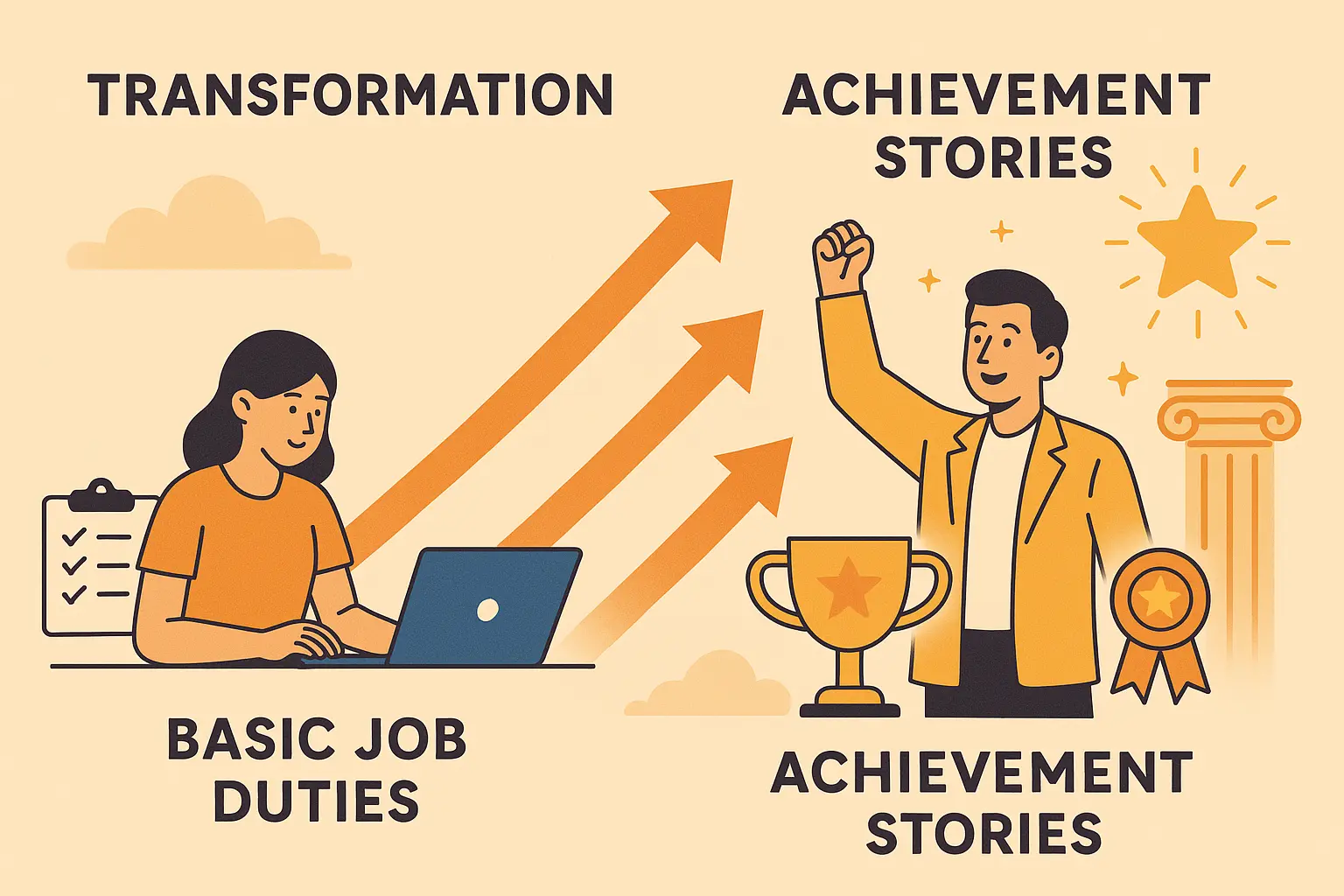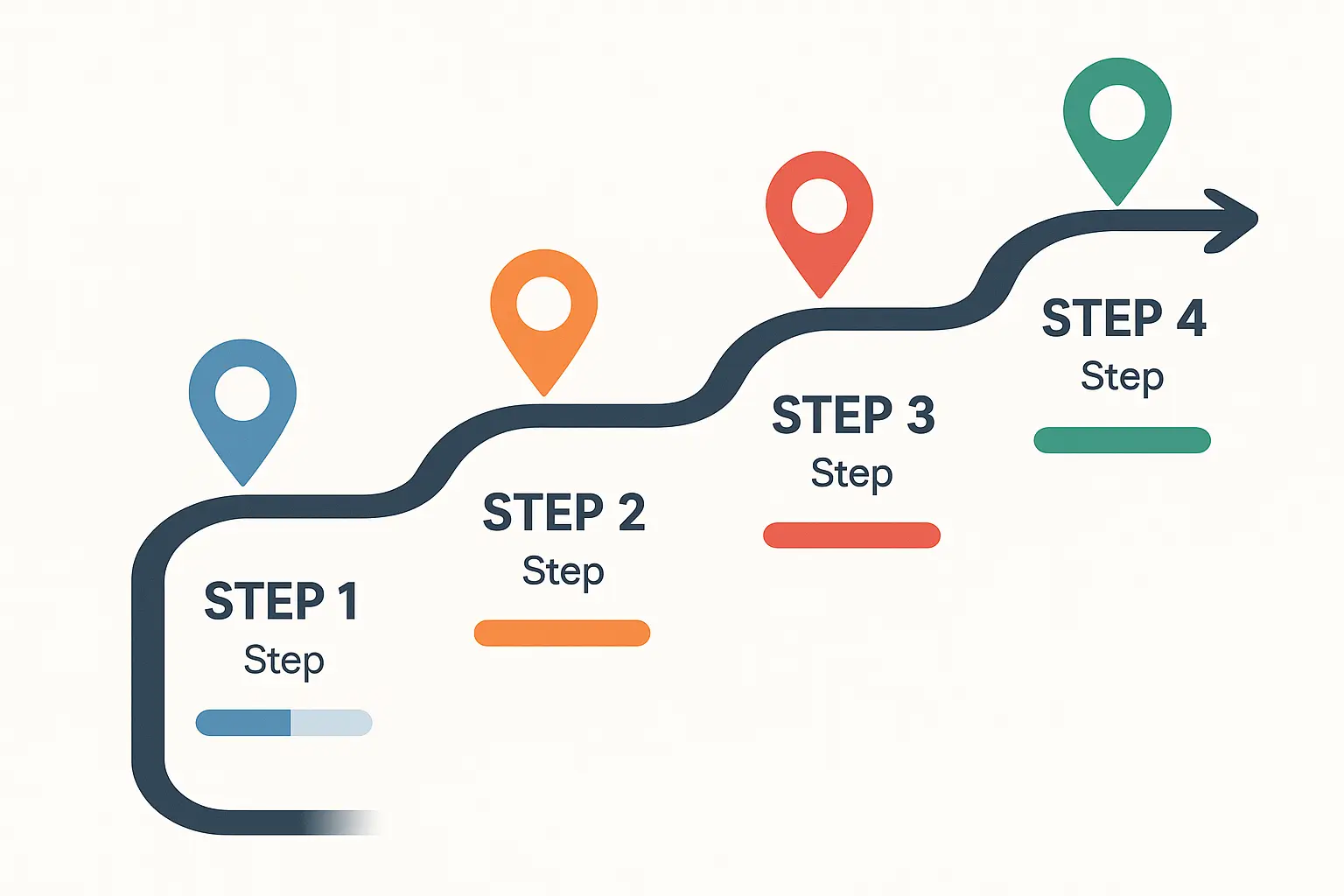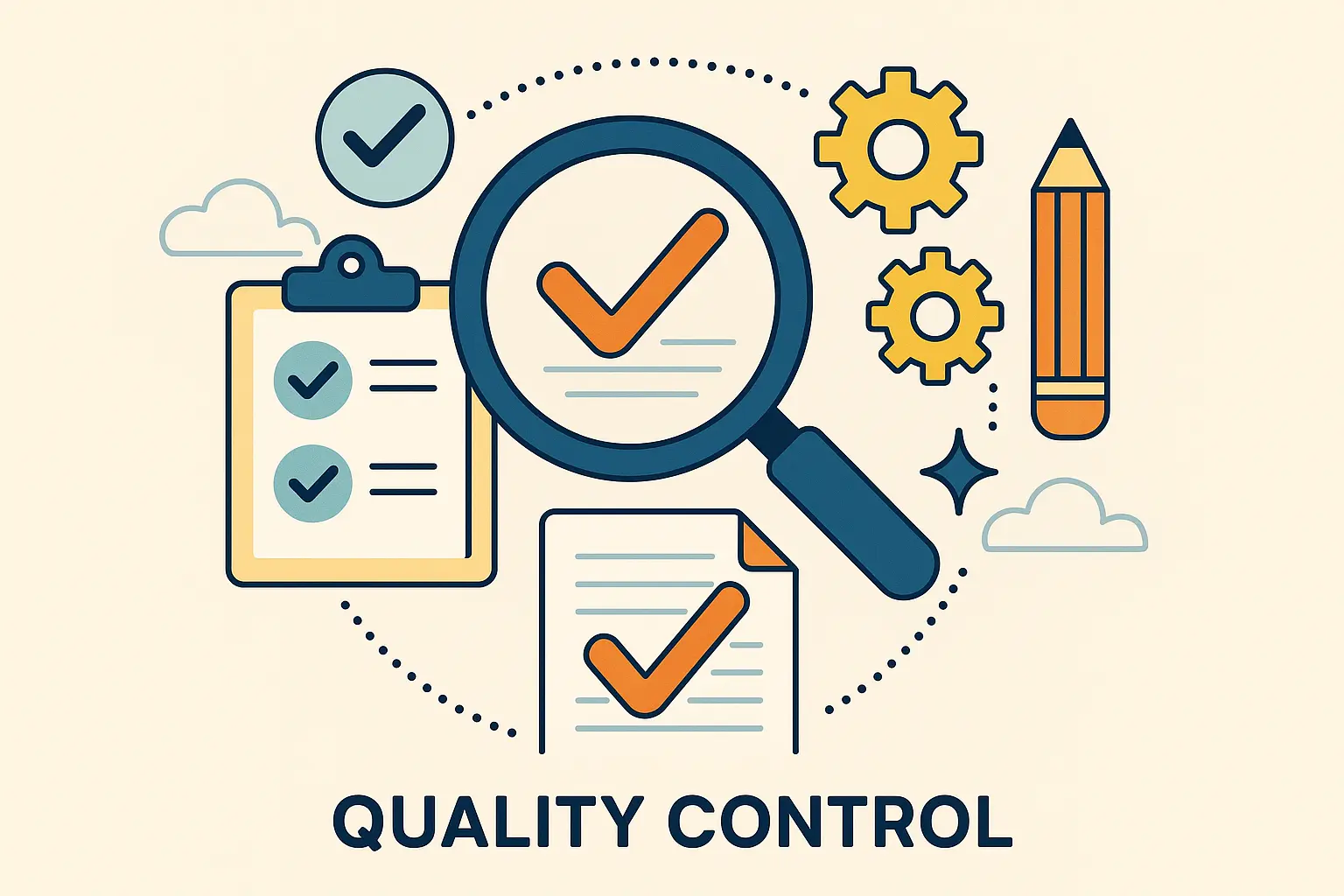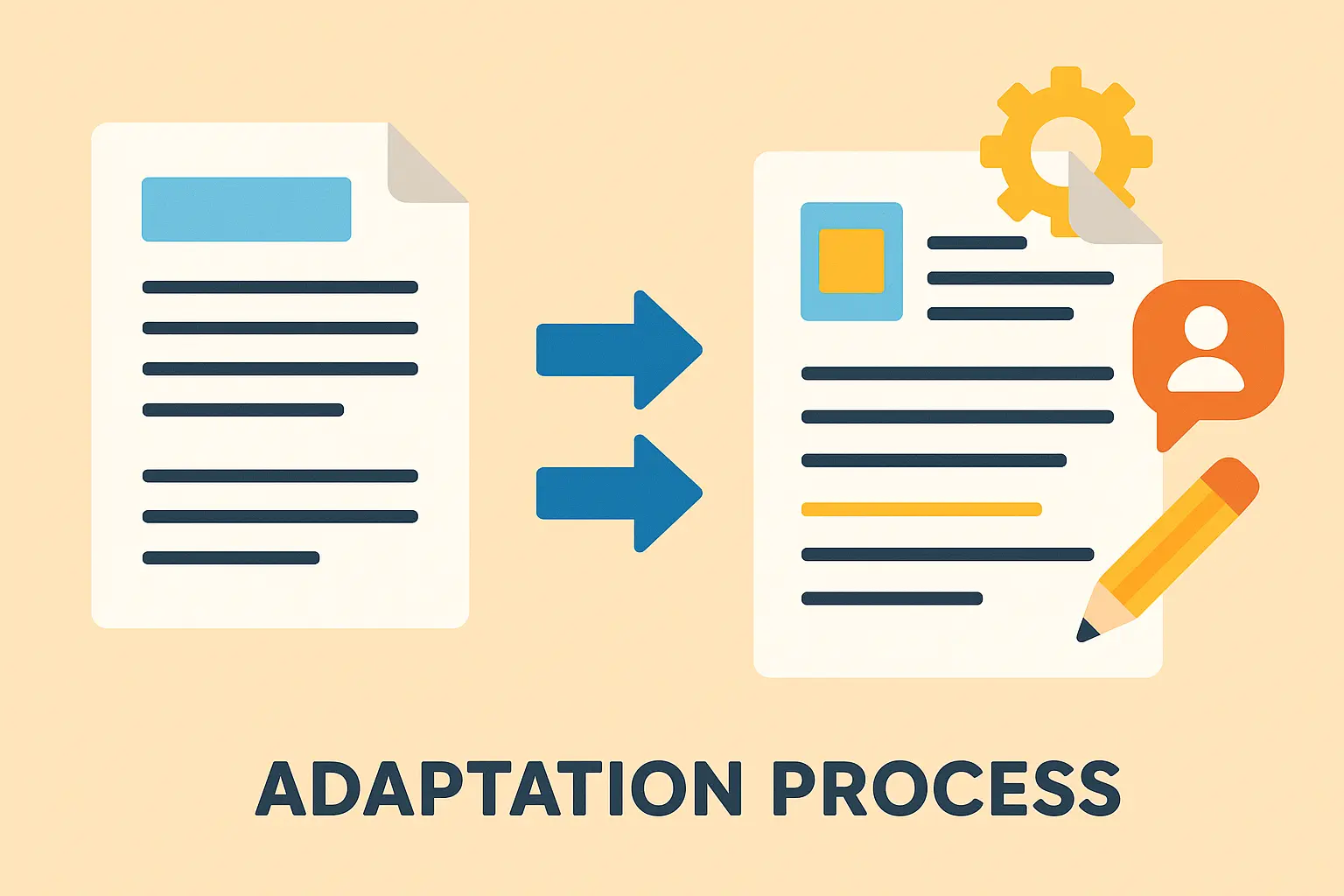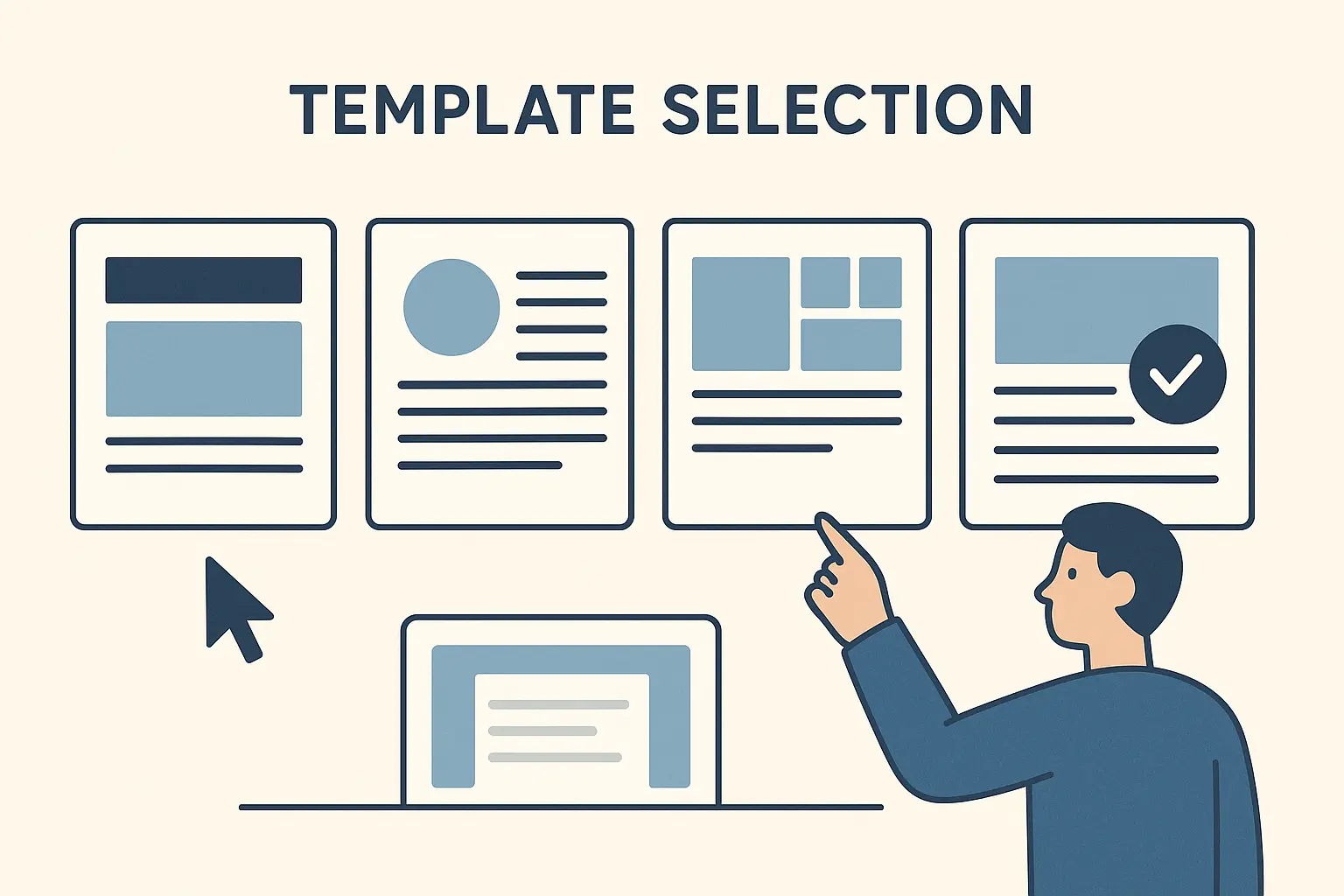What Is a Resume? The Complete Guide to Creating Your Career Game-Changer

Here’s a sobering reality: recruiters spend just 6-8 seconds reviewing a resume according to Forbes before deciding whether you’re worth their time. Recruiters spend just 6-8 seconds reviewing a resume according to Forbes before deciding whether you’re worth their time. If you’re wondering what is a resume and why it matters so much, the answer is simple: it’s your most important career marketing tool. In today’s job market, that means your resume needs to grab attention instantly and make a compelling case for why you’re the right fit.
Table of Contents
- Resume Fundamentals and Modern Evolution
- Cracking the ATS Code: Technical Optimization Essentials
- Writing Content That Actually Gets You Hired
- Your Step-by-Step Resume Creation Roadmap
- Templates and Examples That Work
- Final Thoughts
TL;DR
- Modern resumes are strategic marketing documents designed to pass both automated systems and human reviewers within seconds
- ATS optimization requires specific formatting, keyword integration, and file format considerations to ensure your resume gets seen
- Achievement-focused content with quantified results outperforms generic job duty lists every time
- Industry-specific customization and regular updates are essential for maintaining competitive advantage
- Professional templates and examples provide valuable frameworks, but personalization is key to standing out
Resume Fundamentals and Modern Evolution
Resume writing has completely changed over the past decade. At its core, when people ask “what is a resume,” the answer today is very different from 10 years ago—it’s no longer just a job list but a strategic marketing document.
The numbers tell a stark story: only 3% of resumes will result in an interview according to Forbes, up to 90% of employers, including most Fortune 500 companies, use Applicant Tracking Systems (ATS) to manage candidate applications, and the average resume length is 489 words according to McKinsey research. These aren’t just statistics—they’re the new rules of the game.
What Your Resume Really Does in Today’s Job Market
Think of your resume as your personal marketing brochure. Just like a good ad, it needs to solve a problem (the employer’s hiring need) and show clear benefits (your value). This explains what is a resume in practice: a tool that positions you as the solution to an employer’s problem.
During those crucial 6-10 seconds of initial review, your resume must immediately communicate why you’re the solution to an employer’s problem. This means every word, every bullet point, every section needs to work toward that single goal of getting you that interview.
The Real Purpose Behind Every Great Resume
Modern resumes function as personal branding tools with laser focus. They must pass multiple tests simultaneously: survive automated screening, capture human attention instantly, and demonstrate measurable value in a competitive landscape where hundreds of other candidates are vying for the same position.
Successful resumes answer three critical questions within seconds: Who are you professionally? What problems can you solve? Why should they care about your specific experience? The documents that rise to the top share common characteristics—they’re scannable, achievement-focused, and speak directly to the employer’s needs.
Building Blocks That Actually Matter
Here’s what actually matters in your resume structure. Start with strategic contact information that includes your name, phone number, professional email, LinkedIn profile, and location. Skip the full address—city and state suffice in today’s digital world.
Your professional summary becomes your elevator pitch in written form. Focus on 2-3 sentences that highlight your key strengths and value proposition. This section often determines whether someone continues reading or moves to the next candidate.
Understanding the proper structure is essential, and selecting the right professional resume format ensures your document meets industry standards while maintaining visual appeal.
| Essential Resume Section | Purpose | Key Elements |
|---|---|---|
| Contact Information | Professional accessibility | Name, phone, email, LinkedIn, location |
| Professional Summary | Value proposition hook | 2-3 sentences highlighting key strengths |
| Work Experience | Achievement demonstration | Job titles, companies, dates, quantified results |
| Skills | Keyword optimization | Technical and soft skills relevant to target role |
| Education | Credential verification | Degrees, institutions, relevant coursework/honors |
The work experience section carries the most weight. Focus on achievements rather than responsibilities, using specific metrics whenever possible. Your skills section serves double duty—it helps with keyword optimization while showcasing your capabilities to human reviewers.
Getting the Length and Content Balance Right
The 1-2 page rule exists for good reason: it forces strategic thinking about every piece of content you include. Entry-level professionals should stick to one page. Mid-career professionals can extend to two pages if the content justifies the space. Senior executives might need additional room for comprehensive achievement documentation, but even then, every word must earn its place.
The key is ensuring every piece of content serves a specific purpose in demonstrating your fit for target roles. Regularly audit your resume content, removing outdated information that no longer supports current career goals.
Resume vs. CV: Why the Difference Actually Matters
Many people use these terms interchangeably, but the distinction can make or break your application success. A quick way to clarify what is a resume versus a CV is that resumes are concise, targeted, and achievement-focused, while CVs are comprehensive academic records.
Knowing Which Document Opens Doors
In the US corporate world, resumes dominate. They’re concise, achievement-focused, and designed for quick scanning. CVs rule academic and research fields, where comprehensive documentation of publications, research, and academic achievements matters more than brevity.
International applications often require CVs regardless of industry. European, Asian, and other global markets typically expect more detailed documentation of your professional history. Always research regional expectations before deciding on document type—the wrong choice can instantly disqualify your application.
Content and Structure: Two Different Approaches
CVs provide comprehensive career records without length restrictions. They include detailed publication lists, research projects, conference presentations, grants, and academic achievements. The goal is thorough documentation rather than strategic marketing.
Resumes focus on relevant accomplishments and measurable impact. Every section supports your candidacy for specific roles. The key is identifying which achievements matter most for your target positions and presenting them strategically.
Here’s the difference in action: A marketing professional applying for a corporate role would submit a 2-page resume highlighting campaign results such as “Increased brand awareness by 35% through integrated social media strategy.” The same person pursuing a marketing professorship would submit a CV detailing publications, conference presentations, and research grants without length constraints.
Building Your Resume Strategy From the Ground Up
Effective resumes don’t happen by accident. They require strategic planning and deep understanding of your target audience. When clients ask me what is a resume supposed to achieve, I explain that it should clearly demonstrate value to both automated systems and human reviewers.
Understanding Who’s Really Reading Your Resume
Successful resumes speak directly to their intended audience. This might be hiring managers focused on team fit, HR professionals checking qualification boxes, or department heads evaluating technical capabilities.
Spend time researching specific role requirements, company values, and industry standards. This research informs every content decision, from which achievements to highlight to how technical skills are presented. Your resume needs to address the specific needs and concerns of decision-makers.
A startup might value adaptability and growth potential, while an established corporation might prioritize proven processes and measurable results. Understanding these nuances helps you tailor your presentation accordingly.
Cracking the ATS Code: Technical Optimization Essentials
Ever wonder why qualified candidates get rejected before a human even sees their resume? It’s because of Applicant Tracking Systems (ATS)—essentially robots that scan resumes for keywords and proper formatting before passing the “good ones” to actual people.
The technical requirements aren’t optional anymore—they’re essential for job search success. These systems have fundamentally changed how resumes need to be structured and formatted, and understanding how they work gives you a significant advantage in today’s automated hiring landscape.
Making Friends with Applicant Tracking Systems
ATS software filters resumes before human reviewers see them, scanning for keywords, parsing formatting, and ranking candidates based on algorithmic matching. Once you understand their basic functions, these systems become predictable rather than mysterious. They’re looking for specific information in expected places, using standard formatting conventions.
Mastering ATS resume format requirements is essential for ensuring your application reaches human reviewers in today’s automated hiring landscape.
The rise of AI-powered resume screening has made strategic optimization more critical than ever. A recent Business.com analysis noted that modern applicants are “building entire careers with AI, stock language and just enough buzzwords to game the system.” This highlights the need for authentic yet optimized strategies that demonstrate genuine expertise rather than superficial manipulation.
Strategic Keyword Integration That Actually Works
Keyword stuffing died years ago, but strategic keyword placement remains essential. Use job descriptions as keyword roadmaps, identifying the terms and phrases that appear repeatedly across target positions.
The key is natural integration. Your resume should read smoothly while incorporating relevant industry terminology and role-specific language. Weave keywords throughout different sections, ensuring they appear in context rather than as obvious additions.
Technical skills sections provide natural keyword opportunities. Professional summaries allow for strategic term placement. Work experience descriptions can incorporate action verbs and industry terminology that ATS systems recognize and value.
Formatting Rules That Keep You in the Game
ATS-friendly formatting requires specific technical considerations. Simple formatting always wins over creative design when it comes to system compatibility.
Keep it simple: stick to basic fonts like Arial or Calibri, use clear headers like ‘Experience’ and ‘Skills,’ and avoid fancy graphics or symbols. Think ‘clean and professional,’ not ‘creative masterpiece.’
ATS-Friendly Formatting Checklist:
- ☐ Use standard fonts (Arial, Calibri, Times New Roman)
- ☐ Include clear section headers (Experience, Education, Skills)
- ☐ Use simple bullet points (•) instead of symbols
- ☐ Avoid tables, text boxes, and graphics
- ☐ Save in both PDF and Word formats
- ☐ Use standard date formats (MM/YYYY)
- ☐ Include keywords naturally throughout content
- ☐ Maintain consistent formatting throughout
- ☐ Use single-column layout
- ☐ Include contact information in header
Standard fonts ensure readability across different systems. Clear section headers help ATS software categorize your information correctly. Simple bullet points parse better than decorative symbols or graphics.
File Formats That Open Every Door
Here’s the file format dilemma: PDFs look perfect but some older systems can’t read them properly. Word docs work better with most systems, but they might look wonky on different computers. The solution? Save both versions and submit whatever the job posting asks for.
Some application systems require plain text versions. These stripped-down formats focus purely on content without any formatting elements. Create text versions by removing all formatting while maintaining clear section breaks and logical information flow.
Professional Formatting That Impresses Humans Too
ATS compatibility is crucial, but your resume still needs to impress human reviewers. Focus on design principles that enhance readability while maintaining technical compatibility. The goal is creating documents that work for both systems and people.
Visual Design Principles for Maximum Impact
Effective resume design guides the reader’s eye to key information. Use strategic white space to create visual breathing room and prevent overwhelming busy hiring managers. Typography choices should enhance readability rather than distract from content.
Professional presentation matters more than creative flair. Clean layouts with consistent spacing and alignment create positive first impressions. Avoid design elements that might interfere with ATS parsing while maintaining visual appeal for human reviewers.
Hierarchy helps readers navigate your resume quickly. Important information should stand out through strategic use of bold text, section headers, and logical organization. The most critical details should be immediately visible during those crucial first seconds of review.
Ensuring Mobile and Digital Compatibility
Recruiters increasingly review resumes on mobile devices. Test every resume across different screen sizes to ensure readability on smartphones and tablets. Content that looks perfect on desktop computers might become unreadable on smaller screens.
Digital compatibility extends beyond mobile devices. Your resume should display correctly across different operating systems, email clients, and document viewers. Verify formatting consistency across multiple platforms before finalizing any document.
Print compatibility remains important despite digital trends. Some interviews still involve printed copies, and you want your resume to look professional in any format. Ensure documents print clearly with appropriate margins and readable font sizes.
Writing Content That Actually Gets You Hired
The difference between getting interviews and getting ignored often comes down to how you present your experience. Achievement-focused content consistently outperforms generic job duty lists, and the patterns are clear across thousands of successful applications.
Transforming Experience into Achievement Stories
Modern resumes emphasize quantifiable achievements over basic job responsibilities. The transformation process starts with identifying what you actually accomplished in each role. Instead of listing what you were supposed to do, focus on what you achieved, improved, or contributed. This shift in perspective completely changes how your experience comes across to hiring managers.
Numbers That Tell Your Success Story
Quantified achievements carry significantly more weight than generic statements. The goal is demonstrating scope and impact through specific data points, even when exact figures aren’t readily available.
Recent concerns about resume authenticity have made quantified achievements more important than ever. A Business.com survey found that resume fraud costs employers $600 billion annually, making hiring managers increasingly focused on verifiable, specific accomplishments rather than vague claims of success.
Let’s say you managed your company’s social media. Don’t just write “Managed social media accounts”—that tells me nothing about your impact. Instead, paint the picture: “Grew our Instagram following from 2,000 to 15,000 followers in six months, which translated to 200+ new leads and $50K in additional revenue.” See the difference? One version describes a task, the other tells a success story.
The key is finding numbers that matter to your target audience. Revenue increases, cost savings, efficiency improvements, team sizes, project timelines, and customer satisfaction scores all provide concrete evidence of your contributions.
When exact numbers aren’t available, estimate ranges or use percentages. “Reduced processing time by approximately 30%” carries more weight than “improved efficiency.” The specificity suggests real measurement and awareness of impact.
Action Verbs That Command Attention
Different industries respond to different action words. Strategic verb selection conveys leadership, initiative, and results more effectively than passive language. The right action words can make you sound like a leader, even in entry-level positions.
| Career Level | Recommended Action Verbs | Impact Focus |
|---|---|---|
| Entry-Level | Assisted, Supported, Contributed, Learned, Developed | Growth and learning |
| Mid-Level | Managed, Led, Implemented, Optimized, Achieved | Leadership and results |
| Senior-Level | Transformed, Spearheaded, Orchestrated, Pioneered, Revolutionized | Strategic impact |
| Executive | Architected, Championed, Strategized, Cultivated, Influenced | Vision and influence |
Entry-level professionals should focus on growth and contribution verbs that demonstrate learning and development. Mid-level candidates can emphasize leadership and achievement verbs that show increasing responsibility and results.
Senior professionals need verbs that convey strategic thinking and transformational impact. Executive-level resumes require language that demonstrates vision, influence, and organizational leadership capabilities.
Customizing for Your Industry and Experience Level
One-size-fits-all resumes rarely succeed in competitive markets. Industry-specific requirements and experience level considerations require different presentation strategies and content priorities.
Sector-Specific Requirements That Matter
Technical fields emphasize certifications, programming languages, and project outcomes. Creative industries showcase portfolio pieces and campaign results. Corporate roles focus on leadership impact and business metrics. Healthcare positions highlight certifications and patient outcomes.
Research industry standards before determining content priorities. A software developer’s resume should prominently feature technical skills and project achievements. A marketing professional needs to emphasize campaign results and brand impact metrics.
Financial services professionals require different presentation strategies than nonprofit workers. Government positions have specific formatting requirements that differ from private sector expectations. Understanding these nuances prevents costly application mistakes.
Adapting Your Approach by Career Stage
Entry-level candidates face unique challenges when limited experience meets high expectations. New graduates and career changers should showcase transferable skills, academic projects, internships, and volunteer work that demonstrate potential and relevant capabilities.
Fresh graduates should emphasize coursework, projects, and internships that align with target roles. Academic achievements, leadership roles in student organizations, and relevant part-time work all contribute to a compelling narrative about readiness and potential.
Mid-level professionals need to demonstrate career progression and increasing responsibility. Focus on showcasing how roles evolved, the scope of impact expanded, and contributions became more strategic over time.
Senior executives require different strategies entirely. Their resumes should emphasize organizational transformation, strategic vision, and measurable business impact. Board positions, industry recognition, and thought leadership activities become relevant content areas.
Geographic and Cultural Considerations
Resume standards vary dramatically across countries and regions. European CVs often include personal information that would be inappropriate in US applications. Asian markets may expect different formatting conventions and content priorities.
International applications require research into local expectations. Some countries expect photographs, personal details, and comprehensive career histories. Others prioritize concise, achievement-focused presentations similar to US standards.
Cultural considerations extend beyond formatting to content emphasis. Collectivist cultures might value team achievements differently than individualistic societies. Understanding these nuances helps create appropriate presentations for global opportunities.
Your Step-by-Step Resume Creation Roadmap
Creating an effective resume requires systematic planning and execution. Here’s a proven four-step process that ensures comprehensive coverage of your professional value while maintaining focus and clarity throughout the development process.
The Four-Step Creation Process That Works
Successful resume development follows structured steps that prevent important details from being overlooked while maintaining strategic focus. Each phase builds systematically toward polished, professional results that effectively communicate your value proposition.
Step 1: Gathering and Organizing Your Career Story
Before writing begins, collect comprehensive information about your achievements, skills, education, and certifications. This preparation phase prevents writer’s block and ensures comprehensive coverage of your professional background.
Career Information Gathering Checklist:
- ☐ List all positions held with exact dates
- ☐ Document quantifiable achievements for each role
- ☐ Compile technical and soft skills inventory
- ☐ Gather education details and certifications
- ☐ Collect awards, recognitions, and honors
- ☐ Note relevant volunteer work and projects
- ☐ Identify professional references
- ☐ Review job descriptions for target roles
- ☐ Research industry-specific keywords
- ☐ Organize information by relevance and impact
Brainstorm extensively during this stage, capturing everything before making strategic decisions about what to include. The organization process involves categorizing information by relevance to target roles. Not everything will make it into the final document, but having comprehensive source material enables strategic selection and customization for different opportunities.
Step 2: Choosing and Customizing Professional Templates
Template selection should align with industry standards while allowing for personalization. Evaluate template options, ensure ATS compatibility, and customize designs to create distinctive yet professional presentations.
When selecting templates, exploring resume format secrets can help you understand which layouts work best for different career stages and industries.
Template evaluation involves checking ATS compatibility, visual appeal, and customization flexibility. The best templates provide structure without constraining content or limiting personalization options.
Customization goes beyond changing colors or fonts. Adapt templates to your specific needs, adjusting section priorities, modifying layouts, and ensuring the final design supports your unique value proposition.
Step 3: Crafting and Refining Your Content
Draft content focusing on achievements and measurable impact, then refine for clarity, conciseness, and keyword optimization. This phase involves multiple revision cycles and strategic content development.
A sales professional might start with “Responsible for client relationships” and refine it to “Cultivated relationships with 50+ enterprise clients, resulting in 95% retention rate and $2.3M in annual recurring revenue through consultative selling approach and quarterly business reviews.”
The refinement process involves multiple revision cycles. First drafts focus on capturing achievements and impact. Subsequent revisions improve clarity, incorporate keywords naturally, and ensure every sentence adds value to your overall presentation.
Content crafting requires balancing comprehensive coverage with strategic focus. Every bullet point should demonstrate value, every section should support your candidacy, and every word should earn its place in the final document.
Step 4: Review, Test, and Perfect
Thorough proofreading and ATS testing prevent costly mistakes that can derail applications. This final phase includes comprehensive review processes, testing methods for ensuring system compatibility, and final optimization techniques that maximize success potential.
Testing involves checking formatting across different systems, verifying ATS compatibility, and ensuring readability on various devices. Have multiple people review the final document for errors and clarity issues.
The perfection phase includes final keyword optimization, formatting consistency checks, and ensuring all contact information is current and professional. Small details matter enormously in competitive job markets.
Keeping Your Resume Current and Competitive
Professional success requires ongoing resume maintenance to reflect new achievements and evolving career goals. Establish regular update schedules and maintain consistency while customizing for specific opportunities.
Establishing Effective Update Routines
Quarterly review cycles help capture new accomplishments while they’re fresh and remove outdated information that no longer serves current career goals. Regular maintenance prevents the overwhelming task of complete resume overhauls when job search needs arise.
Regular updates prevent the overwhelming task of complete resume overhauls when job search needs arise. Maintaining current documents means being ready for unexpected opportunities or career transitions.
Update routines should include achievement tracking, skill development documentation, and industry trend monitoring. Staying current with evolving requirements ensures your resume remains competitive in changing markets.
Managing Versions and Customization
Maintain master resume documents while creating targeted versions for specific opportunities. Version control strategies, customization workflows, and organization systems ensure consistency across applications.
Version management prevents confusion and ensures appropriate customization for different roles. Master documents contain comprehensive information, while targeted versions emphasize relevant achievements and skills for specific opportunities.
Organization systems help track which versions were submitted where, enabling follow-up and preventing duplicate submissions. Professional job search requires systematic approach to application management and document control.
Templates and Examples That Work
Professional resume examples and templates provide valuable frameworks for effective formatting and content structure. Use these resources strategically while avoiding common pitfalls that can undermine professional presentation.
Using Resume Examples as Strategic References
Resume examples offer insights into successful formatting and industry-specific requirements when used as strategic references rather than direct copies. Analyze examples effectively and extract useful principles for unique professional backgrounds.
For specialized fields, reviewing targeted examples through resources such as best resume builders can provide industry-specific insights and formatting guidance.
Learning from Industry-Specific Examples
Different sectors require distinct approaches to resume presentation. Technology professionals need different presentation strategies than healthcare workers. Financial services examples emphasize different achievements than creative industry samples. Understanding these distinctions prevents misaligned applications.
Industry examples reveal keyword patterns, achievement types, and formatting preferences that resonate with specific audiences. This intelligence informs strategic decisions about content emphasis and presentation style.
Successful examples from your target industry show you what works in practice. Pay attention to how achievements are quantified, which skills are emphasized, and how experience is structured for maximum impact.
Adapting Examples to Your Unique Story
Effective use of resume examples involves extracting structural and formatting principles while ensuring content remains authentic to your experience. Maintain your unique voice while leveraging proven presentation strategies.
Adaptation requires understanding why certain examples work rather than simply copying their format. Successful elements can be modified to fit different experiences while maintaining their effectiveness.
Authenticity remains paramount throughout the adaptation process. Your resume should reflect your genuine achievements and capabilities, enhanced by proven presentation techniques rather than replaced by generic templates.
Template Selection and Smart Customization
Professional templates provide structured frameworks that ensure consistent formatting while allowing for strategic personalization. Template evaluation and customization best practices help create distinctive presentations.
Finding Templates That Fit Your Industry
Template selection should align with industry standards, career level, and personal branding goals while maintaining technical compatibility. Evaluate options across different sectors and choose templates that enhance rather than distract from professional messaging.
Government positions require specialized formatting, and exploring federal resume template options ensures compliance with specific federal hiring requirements and standards.
Industry alignment involves understanding visual expectations and formatting conventions. Creative fields might allow more design flexibility, while conservative industries prefer traditional layouts and minimal visual elements.
Customization Strategies That Stand Out
Effective template customization involves strategic adjustments to fonts, colors, and layout elements that create distinctive presentations without sacrificing professionalism. Personalize templates appropriately while maintaining clean, scannable formats.
Customization should enhance rather than overwhelm your content. Subtle modifications can create distinctive presentations while maintaining the professional standards that employers expect from serious candidates.
Strategic customization considers both visual impact and technical compatibility. Changes should improve readability and visual appeal without compromising ATS functionality or professional presentation standards.
Avoiding Template Traps That Hurt Your Chances
Over-designed templates can harm ATS compatibility, while generic templates may fail to differentiate you in competitive markets. Common template pitfalls can be avoided with smart choices that support job search success.
Template Selection Checklist:
- ☐ Verify ATS compatibility with simple formatting
- ☐ Ensure template matches industry standards
- ☐ Check readability across different devices
- ☐ Confirm customization flexibility
- ☐ Test with actual content before finalizing
- ☐ Validate professional appearance
- ☐ Ensure consistent spacing and alignment
- ☐ Verify font compatibility across systems
- ☐ Check color scheme appropriateness
- ☐ Confirm print-friendly formatting
Resume Builder IQ addresses these modern resume challenges through AI-powered optimization that ensures job-specific keyword integration, professional templates that eliminate formatting concerns, and comprehensive guidance through every step of the creation process. Their platform creates both ATS-friendly and visually appealing resumes, helping you navigate the complex requirements of today’s hiring landscape with confidence.
Final Thoughts
Your resume isn’t just a list of jobs—it’s your professional story told in a way that makes employers think, “I need to meet this person.” If you’ve ever wondered what is a resume really for, the answer is simple: to open doors by proving your skills and value instantly.
The best part? Once you nail this process, you’ll never stress about resume writing again. You’ll have a system for showcasing your achievements that grows with your career and adapts to any opportunity that comes your way.
Remember that your resume is a living document that should evolve with your career. Regular updates, strategic customization for different opportunities, and staying current with industry trends will keep you competitive in an ever-changing job market. The investment you make in crafting a truly effective resume pays dividends throughout your career, opening doors to opportunities that might otherwise remain closed.
Success comes from understanding that every element of your resume—from formatting choices to word selection—should serve the ultimate goal of securing interviews and advancing your career. With the right approach, your resume becomes a powerful tool that accurately represents your professional value and helps you achieve your career objectives.

